Join More Than 50,000+ Subscribers and get latest camera news and rumors
NEW CAMERA VIDEOS ON YOUTUBE
|
By admin, on October 24th, 2012
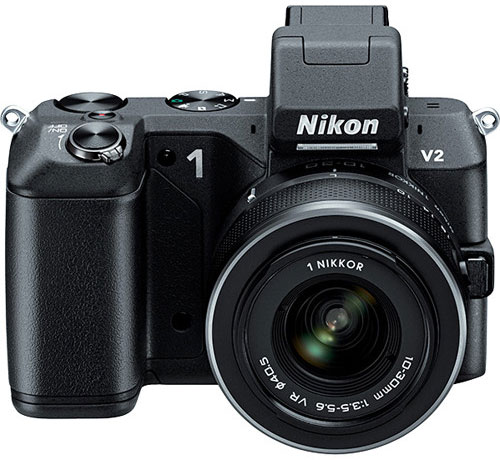
Buy Nikon V2 at B&H Store
As we have said earlier that Nikon is ready to announce its V2 camera on October 24 and Nikon Finally announced its V2 mirrorless camera with a new sensor and latest EXPEED 3A image-processing engine, the new camera also include electronic viewfinder (EVF) and built in flash.
The Nikon V2 losses the slim shape and comes with big handgrip and in-built flash and EVF, the upgraded sensor combined with the blazing fast Advance Hybrid AF system allows users to shoot up to 15 frames-per-second (fps) while maintaining full AF tracking that allows the capturing of fast moving subjects. Other new and noteworthy features include versatile and fun shooting modes such as Best Moment Capture Mode and the new Live Image Control that lets a user preview their creative vision, pre-capture. see major features below
- 14.2MP 13.2 x 8.8mm newly developed CMOS CX Image Sensor
- EXPEED 3A Image Processor
- Advanced Hybrid AF (Phase + Contrast)
- wide ISO range (160-6400)
- 3.0″ LCD Display
- 15 Frames/Second Burst Shooting
- Electronic Viewfinder
- Wireless-Capable
- 1920 x 1080/60p Movie Capture
- i-TTL Hot Shoe for Optional Speedlight
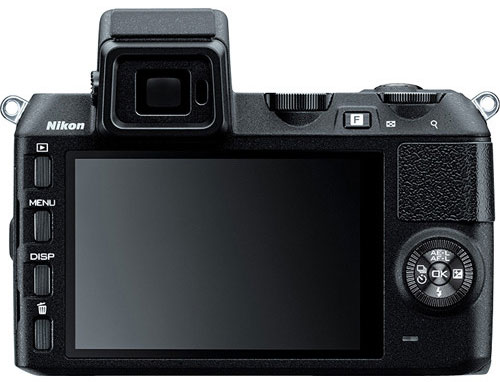
The camera is also equipped with an Enhanced Motion Snapshot Mode, which users can utilize to capture fleeting moments with a short, slow-motion movie sequence in addition to a single defining still image. A Motion Snapshot can be saved as a four second MOV file and JPEG image file separately or it can also be saved as a 10 second movie file without a separate JPEG image file, making it easy to share with others. Furthermore, Motion Snapshots can be combined into a continuous slideshow seamlessly within the camera.
The Nikon 1 V2 also includes Best Moment Capture Mode, an advanced creative mode that allows individuals to use Slow View to slow down a moment they are capturing, in real time. By simply pressing the shutter button halfway down when focused, users can capture live action (approx. 1.33 seconds), while the view of the subject is displayed at five times slower than normal speed (approx. 6.66 sec). The action is replayed repeatedly as long as the shutter-release button is half-pressed. Fast action sports and events are transformed to slow motion right on the LCD screen, letting the user capture once-in-a-lifetime moments with confidence.
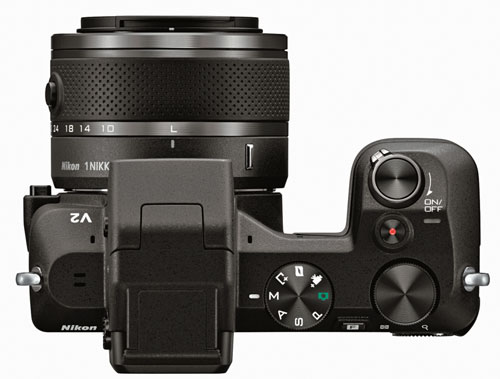
Price and Availability The Nikon 1 V2 camera with the 10-30mm lens will be available in late November 2012 for the suggested retail price (SRP) of $899.95*. The SB-N7 speedlight will be available in January 2013 and will have a suggested retail price (SRP) of $159.95*.
By admin, on October 23rd, 2012
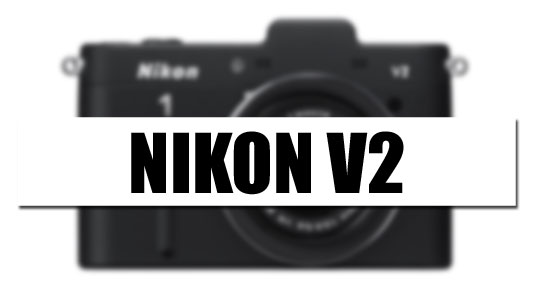
Update: Nikon V2 announced
Full specification of Nikon V2 specification is out now, the expected arrival date of Nikon V2 mirrorless camera is Oct 24, 2012 (tomorrow)
Nikon V2 Major Specification
- Super high-speed AF CMOS sensor pixel sensor newly developed 14.25 million
- The new image processing engine EXPEED 3A
- The contrast AF AF AF point and 135 phase difference 73 points
- Second 15 frames / second continuous shooting 60 frames / best while following in the AF
- Live control function can be set to make picture while checking the finish
- Slow feature a view that displays fast moving slowly
- 1.44 million dot EVF is 100%, the rate of visual field
- LCD monitor 3.0-inch 920 000 dot
- Media SD / SDHC / SDXC
- Full HD video
- 1/4000-30 seconds shutter speed
- ISO sensitivity 160-6400
- Weight 337 g (with battery, including media)
- Body only, (18.5mm ,10-30mm VR) provides, hyper double zoom kit (10-30mm VR ,10-100mm VR) is a standard zoom lens kit (10-30mm VR), double lens kit.
- Around ¥ 90000, expected price over-the-counter only standard body kit zoom around 100000 yen.
- Released in November 2012.
source – digicam.info
By admin, on October 13th, 2012
 ephotozine just reviewed Voigtlander 17.5mm f/0.95 Nokton lens for Micro 4/3 Mount, the lens scored 4 out 5 star, Voigtlander 17.5mm is the only lens for M4/3 format camera to support f/0.95 aperture to give your images a dreamy feel, excellent lens for portrait and low-light work. ephotozine just reviewed Voigtlander 17.5mm f/0.95 Nokton lens for Micro 4/3 Mount, the lens scored 4 out 5 star, Voigtlander 17.5mm is the only lens for M4/3 format camera to support f/0.95 aperture to give your images a dreamy feel, excellent lens for portrait and low-light work.
Conclusion by ephotozine – see the full review here
Voigtlander 17.5mm f/0.95 Nokton Micro Four Thirds Pros
- Good sharpness in the centre at max aperture
- Even better sharpness when stopped down
- Superb build quality and handling
- Stepless aperture feature for video
- Hyperfocal focusing scale
- Reasonably priced
Voigtlander 17.5mm f/0.95 Nokton Micro Four Thirds Cons
- High levels of CA towards the edges of the frame at maximum aperture
- May be a little too heavy for use on the most compact MFT bodies
Buy Voigtlander 25mm f/0.95 Nokton for Micro 4/3 Mount at Amazon
By admin, on October 12th, 2012
Even if you only have the most rudimentary knowledge of photography and are content with your compact digital camera, there’s a strong chance that you’ve heard of DSLR cameras. For more than a decade they have generally been considered to be at the top of the pile in terms of camera technology. However, due to a recent innovation by technology giants, Sony, there’s a brand new acronym in town looking to claim the title of ‘camera of choice’ for itself – the SLT.

What’s the difference? Where’s the innovation? Well, part of the story is in the name: DSLR stands for digital single lens reflex; SLT for single lens translucent. Forgetting the omission of ‘digital’, the key difference lies in the use of the term ‘translucent’, rather than ‘reflex’, which in both cases refers to a mirror used inside the camera.
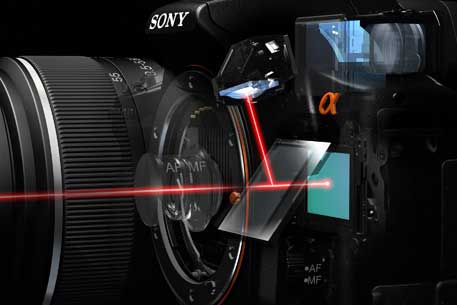
In the case of the DSLR, the mirror reflects light up into the viewfinder and then, once the shutter button is pressed, it lifts out of the way to allow the photograph to be taken, hence the ‘reflex’.
In the case of the SLT, however, the mirror is translucent, so it allows light to travel directly through it for the picture, with only a small amount being reflected for use in the camera’s autofocus system, thus eliminating the need for internal movement of the mirror.
This means three things primarily: firstly, less of a time delay between pressing of the shutter button and the actual photo being taken, so photos are practically instant and can be taken in more rapid succession. Secondly, the lack of movement inside the camera reduces shake and blur, meaning sharper images.
However, the third difference associated with the translucent mirror is that invariably a small quantity of light is absorbed by the mirror, which ultimately means that less light finds its way through to the sensor – so certain shots, in low light for example, may lack a degree of clarity and definition.
The technology behind SLT cameras is certainly promising and impressive, although still in its early days, so it’s perhaps no surprise that many professional photographers continue to use traditional DSLRs. The jury is still out in terms of which camera type is superior, but can we certainly think both can co-exist?
By admin, on October 9th, 2012
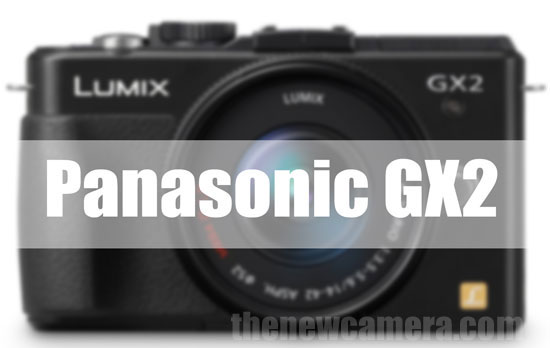
The rumors is almost confirmed that Panasonic GX2 camera will arrive with advance core specification and same sensor as Panasonic GH3, the expected date of announcement is first week of November 2012.
Current GX1 got multiple price drops, Kit Lens + Camera Body available at $469 at Amazon (You Save approx: $330.99)
By admin, on September 29th, 2012
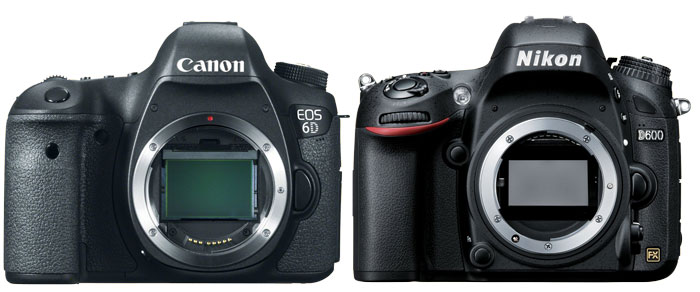 Canon 6D have and Nikon both features newly developed CMOS sensor, Nikon have more advance AF system, see the comparison review below and select best entry level FF camera. Canon 6D have and Nikon both features newly developed CMOS sensor, Nikon have more advance AF system, see the comparison review below and select best entry level FF camera.
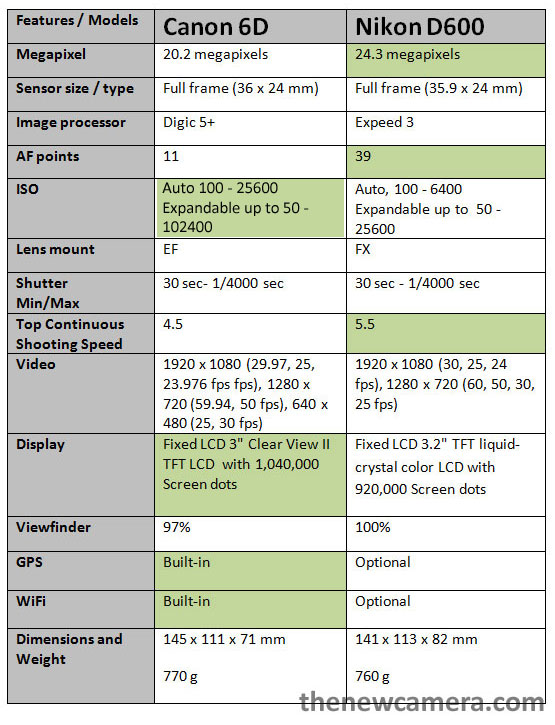
Sensor: Canon 6D and Nikon D600 both features newly developed sensor and ISO range of both the DSLR are same.
Image processor: Both DSLRs are using best image processor available yet, Nikon is using Expeed 3 image processor of Nikon D4 and D800 DSLR on the other hand Canon 6D is using Digic 5+ image processor of Canon 5D Mark III and Canon 1D X.
Lens Mount: (buyers choice)
On Top Continuous shooting speed Nikon D600 have the upper hand, Canon 6D limited to 4.5 fps only.
AF System: Both DSLRs uses phase detection AF system, Nikon D600 have more AF points compared to Canon 6D, But Canon 6D have more AF working range compared to Nikon D600.
AF working range of both the DSLRs
Nikon D600 Working Range -1 to 19 EV (ISO 100, 68°F/20°C)
Canon 6D AF Working Range Center AF Point: EV -3 to 18 (at 73°F/23°C, ISO 100)
In Video both have almost same specification,
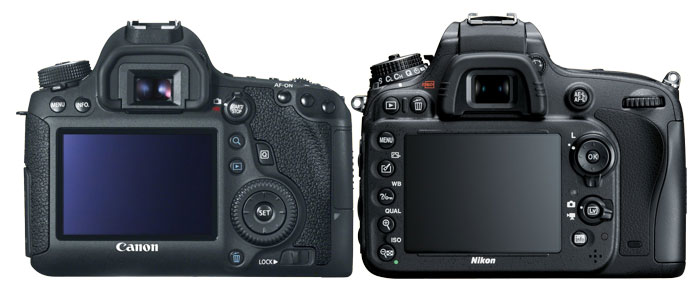
Display Unit(s): Canon 6D offers a high resolution display and a optical viewfinder with 97% coverage, Nikon D600 have bit bigger but lower res. display with a optical viewfinder with 100% coverage.
Other features include is WiFi and GPS comes with Canon 6D, Canon 6D also features In Camera HDR and Multiple exposures are also possible in-camera and up to 9 exposures can be recorded onto a single file using 2 distinct settings for control, Nikon D600 is missing all these features.
Price Factor: Both camera comes at same price range of $2K, so difference is not a big factor here,
Conclusion: Canon 6D offers more standard ISO range and Nikon D600 have more AF points, but the Choice is yours. Remember Both DSLRs have full frame sensor, Nikon D600 offers advance AF system on the other hand Canon 6D offers you more standard ISO range, AF working range, built in GPS, WiFi and better display.
Buy Canon 6D from Amazon | B&H
Nikon D600 from Amazon | B&H
By admin, on September 27th, 2012
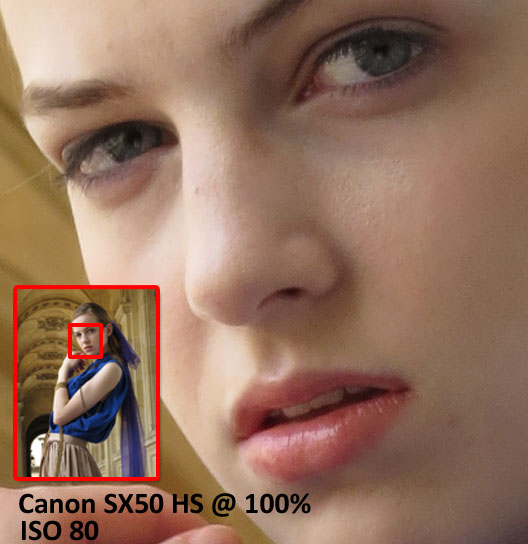
Few Sample Images now available at Canon Japan, Canon USA and UK website, see the sample gallery link below
Canon Japan Sample Images
Canon US Sample Image
Canon UK Sample Image
Buy Canon SX50 HS from Amazon
|
KEEP THIS BLOG ALIVE - Support New Camera Buy Canon Lenses, Buy Music CD or Digital Camera at amazon it helps this site, and you do not pay anything extra, it is just a way to help support this site.

|

















